2016 年 6 月英语四级真题及答案第二套
Part I Writing (30 minutes)
Directions:For this part, you are allowed 30 minutes to write a letter to express
your thanks to one of your school teachers upon entering college. You should write
at least 120 words but no more than 180 words.
Part Ⅱ Listening Comprehension (25 minutes)
Section A
Directions: In this section, you will hear three news reports。 At the end
of each news report, you will hear two or three questions。 Both the news report
and the questions will be spoken only once。 After you hear a question, you must
choose the best answer from the four choices marked A), B), C) and D)。 Then
mark the corresponding letter on Answer Sheet 1 with a single line through the centre。
Questions 1 and 2 are based on the news report you have just heard。
Question 1
A)
How
college students
can
improve their
sleep
habits.
B)
Why
sufficient
sleep
is
important
for college
students.
C)
Why
college students
are
more
likely
to
have
stress problems.
D)
How
college students
can
handle their
psychological
problems.
Question 2
A)
It
is
not
easy
to
improve
one's
sleep
habits.
B)
It
is
not
good
for
students to
play
video
games.
C)
Students
who
are
better
prepared
generally
get
higher
scores
in
e
xaminations.
D)
Making
last-minute
preparations
for tests
may
be
less
effective
th
an
sleeping.
Drections:
Questions
3
and
4
are
based
on
the
news
report
you
have
just
heard.
�
Question 3
A)
Whether
more
airports
should
be
built
around
London.
B)
Whether
adequate
investment
is
being
made
to
improve
airport
facil
ities.
C)
Whether
the
British
Airports
Authority
should
sell
off
some
of
it
s
assets.
D)
Whether
the Spanish
company
could
offer
better
service.
Question 4
A)
Inefficient
management.
B)
Poor ownership
structure.
C)
Lack of
innovation
and
competition.
D)
Lack of
runway
and
terminal
capacity.
Drections:
Questions
5
to
7
are
based
on
the
news
report
you
have
just heard.
Question 5
A)
Report
the
nicotine
content of
their
cigarettes.
B)
Set
a
limit
to
the
production
of
their
cigarettes.
C)
Take steps
to
reduce
nicotine
in
their
products.
D)
Study
the
effects
of
nicotine
on
young
smokers.
Question 6
A)
The
biggest
increase in
nicotine
content
tended
to
be
in
brands
young
smokers
like.
B)
Big
tobacco
companies
were
frank
with
their
customers
about
the
h
azards
of
smoking.
C)
Brands
which
contain
higher
nicotine
content
were
found
to
be
mu
ch
more popular.
D)
Tobacco
companies
refused
to
discuss
the
detailed
nicotine
content
of
their
products.
Question 7
A)
They promised
to
reduce
the
nicotine
content in
cigarettes.
�
B)
They have
not
fully
realized the
harmful
effect
of
nicotine.
C)
They were
not
prepared
to
comment
on
the
cigarette
study.
D)
They will
pay
more
attention
to
the
quality
of
their
products.
Section
B
Conversation
Directions: In
this section, you will
hear two
long
conversations。 At
the
end
of
each conversations
you will
hearfour questions。 Both
the
conversations
and the
question-s
will
be
spoken
only
once。 After
yo
u
hear
a
question。 You
must choose
the
best
answer
from
the
four choices
marked
A),B),C)
and
D)。 Then
mark
the
correspondingletter
on
Answer
Sheet
1
with
a
single
line through
the
centre。
Question 8
A)
Indonesia.
B)
Holland.
C)
Sweden.
D)
England.
Question 9
A)
Getting
a
coach
who
can offer
real
help.
B)
Talking
with
her
boyfriend
in
Dutch.
C)
Learning a
language
where
it
is
not
spoken.
D)
Acquiring
the
necessary
ability
to
socialize.
Question 10
A)
Listening
to
language
programs
on
the
radio.
B)
Trying
to
speak
it
as
much
as
one can.
C)
Making
friends
with
native
speakers.
D)
Practicing
reading
aloud
as
often
as
possible.
Question 11
A)
It
creates
an
environment
for
socializing.
B)
It
offers
various
courses with
credit
points.
C)
It
trains
young
people's
leadership
abilities.
�
D)
It
provides opportunities
for language
practice.
Drections:
Questions
12
to
15
are
based
on
the
conversation
you have
just
heard.
Question 12
A)
The
impact of
engine
design
on
road
safety.
B)
The
role
policemen
play
in
traffic
safety.
C)
A
sense
of
freedom
driving
gives.
D)
Rules
and
regulations
for driving.
Question 13
A)
Make cars
with automatic
control.
B)
Make cars
that have
better
brakes.
C)
Make cars
that are
less
powerful.
D)
Make cars
with higher
standards.
Question 14
A)
They tend
to
drive
responsibly.
B)
They like
to
go
at
high speed.
C)
They keep
within
speed
limits.
D)
They follow
traffic
rules
closely.
Question 15
A)
It
is
a
bad
idea.
B)
It
is
not
useful.
C)
It
is
as
effective
as
speed
bumps.
D)
It
should
be
combined with
education.
Section
C
Passages
Directions: In
this section, you will
hear three
passages。 At
the en
d
of
each
passage, you
will
hear
three
or
fourquestions。 Both the
assage
and
the questions
will
be
spoken
only
once。 After
you
hear
p
a
question, you
must
choose
the
best
answer
from
the
four
choices
marked
A),B),C)and
D)。
Then
mark
the
corresponding
letter
onAnswer
Sheet
1
with
a
single
li
�
ne
through
the centre。
Drections:Questions
16
to
18
are
based
on
the
passage
you
have
just
heard.
Question 16
A)
The
card
got
damaged.
B)
The
card
was
found
invalid.
C)
The
card
reader
failed
to
do
the
scanning.
D)
The
card
reader
broke
down
unexpectedly.
Question 17
A)
By
covering
the
credit
card with
a
layer
of
plastic.
B)
By
calling
the credit
card
company for
confirmation.
C)
By
seeking
help
from
the card
reader
maker
Verifone.
D)
By
typing
the
credit card
number
into the
cash
register.
Question 18
A)
Affect
the
sales
of
high-tech
appliances.
B)
Change
the
lifestyle
of
many Americans.
C)
Give birth
to
many
new
technological
inventions.
D)
Produce
many
low-tech
fixes
for
high-tech
failures.
Drections:
Questions
19
to
21
are
based
on
the
passage
you
have
jus
t
heard.
Question 19
A)
They are
set
by
the
dean
of
the
graduate school.
B)
They are
determined
by
the advising
board.
C)
They leave
much
room
for improvement.
D)
They vary
among
different
departments.
Question 20
A)
By
consulting
the
examining
committee.
B)
By
reading
the Bulletin
of
Information.
C)
By
contacting
the
departmental
office.
D)
By
visiting the
university's
website.
�
Question 21
A)
They specify
the
number
of
credits
students must
earn.
B)
They are
harder
to
meet
than
those
for
undergraduates.
C)
They have
to
be
approved by
the
examining
committee.
D)
They are
the
same among
various divisions
of
the university.
Drections:
Questions
22
to
25
are
based
on
the
passage
you
have
jus
t
heard.
Question 22
A)
Students majoring
in
nutrition.
B)
Students in
health
classes.
C)
Ph.D.
candidates
in
dieting.
D)
Middle
and
high
school
teachers.
Question 23
A)
Its
overestimate
of
the
effect
of
dieting.
B)
Its
mistaken
conception
of
nutrition.
C)
Its
changing
criteria
for beauty.
D)
Its
overemphasis
on
thinness.
Question 24
A)
To
illustrate
her
point
that
beauty
is
but
skin
deep.
B)
To
demonstrate
the
magic
effect
of
dieting
on
women.
C)
To
explain
how computer
images
can
be
misleading.
D)
To
prove
that
technology
has impacted
our
culture.
Question 25
A)
To
persuade
girls
to
stop
dieting.
B)
To
promote
her
own concept
of
beauty.
C)
To
establish
an
emotional
connection
with
students.
D)
To
help students
rid
themselves
of
bad living
habits.
Part III Reading Comprehension (40 minutes)
�
Section A
Directions: In this section, there is a passage with ten blanks. You are required
to select one word for each blank from a list of choices given in a word bank following
the passage.
Contrary to popular belief, older people generally do not want to live with their
children. Moreover, most adult children _____(26)every bit as much care and support
to their aging parents as was the case in the "good old days", and roost older people
do not feel _____(27).
About 80% of people 65 years and older have living children, and about 90% of
them have _____(28)contact with their children. About 75% of elderly parents who
don't go to nursing homes live within 30 minutes of at least one of their children.
However, _____(29)having contact with children does not guarantee happiness in
old age. In fact, some research has found that people who are most involved with
their families have the lowest spirits. This research may be _____(30), however,
as ill health often makes older people more _____(31)and thereby increases contact
with family members. So it is more likely that poor health, not just family
involvement, _____(32)spirits.
Increasingly, researchers have begun to look at the quality of relationships,
rather than at the frequency of contact, between the elderly and their children.
If parents and children share interests and values and agree on childrearing
practices and religious _____(33)they are likely to enjoy each other's company.
Disagreements on such matters can _____(34)cause problems. If parents are angered
by their daughter's divorce, dislike her new husband, and disapprove of how she is
raising their grandchildren, _____(35)are that they are not going to enjoy her
visits.
A.abandoned
B.advanced
C.biased
D.chances
E.commitment
�
F.dampens
G.dependent
H.distant
I.frequent
J.fulfillment
K.grant
L.merely
M.provide
N.understandably
O.unrealistically
Section B
Directions: In this section, you are going to read a passage with ten statements
attached to it. Each statement contains information given in one of the paragraphs.
Identify the paragraph from which the information is derived. You may choose a
paragraph more than once. Each paragraph is marked with a letter. Answer the
questions by marking the corresponding letter on Answer Sheet 2.
Could Food Shortages Bring Down Civilization?
[A] For many years I have studied global agricultural, population, environmental
and economic trends and their interactions. The combined effects of those trends
and the political tensions they generate point to the breakdown of governments and
societies. Yet I, too, have resisted the idea that food shortages could bring down
not only individual governments but also our global civilization.
[B] I can no longer ignore that risk. Our continuing failure to deal with the
environmental declines that are undermining the world food economy forces me to
conclude that such a collapse is possible.
[C] As demand for food rises faster than supplies are growing, the resulting
food-price inflation puts severe stress on the governments of many countries. Unable
to buy grain or grow their own, hungry people take to the streets. Indeed, even before
the steep climb in grain prices in 2008, the number of failing states was expanding.
�
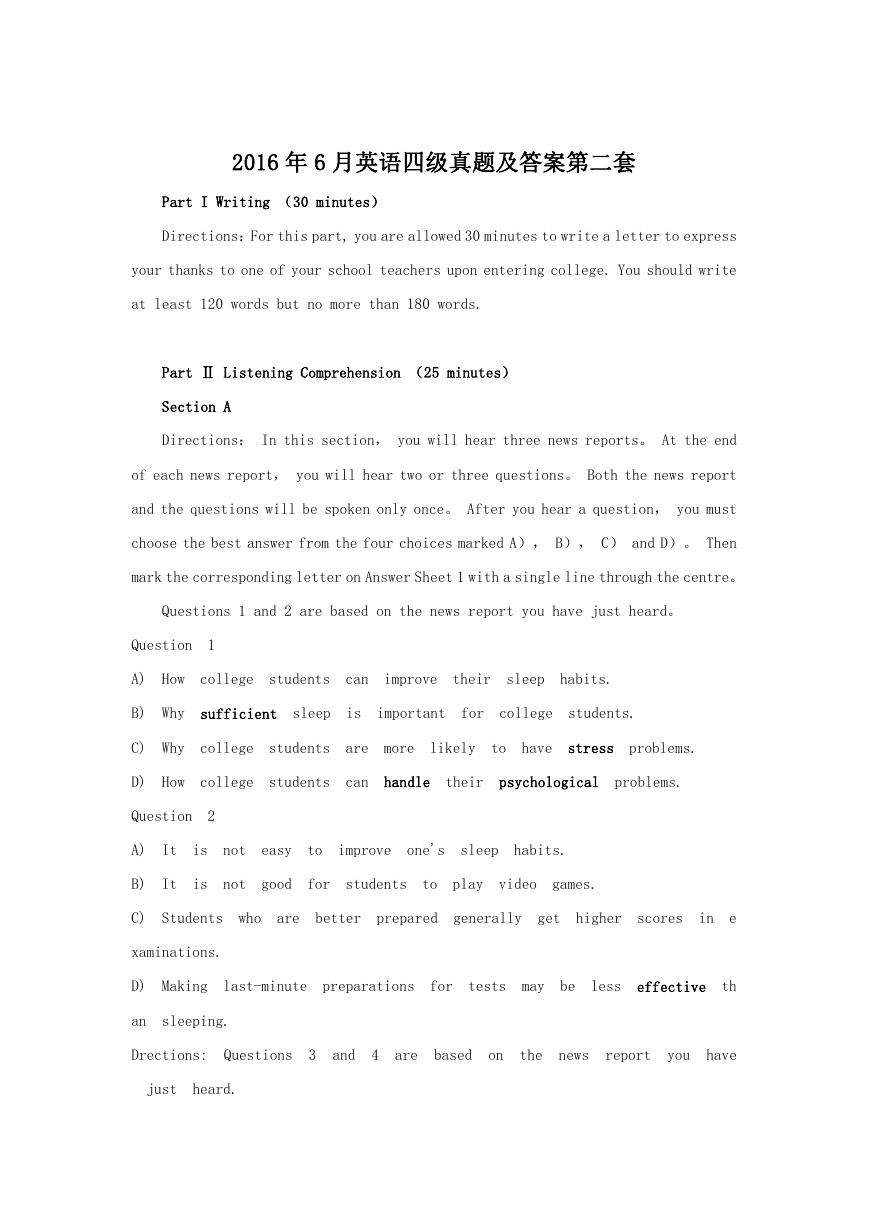
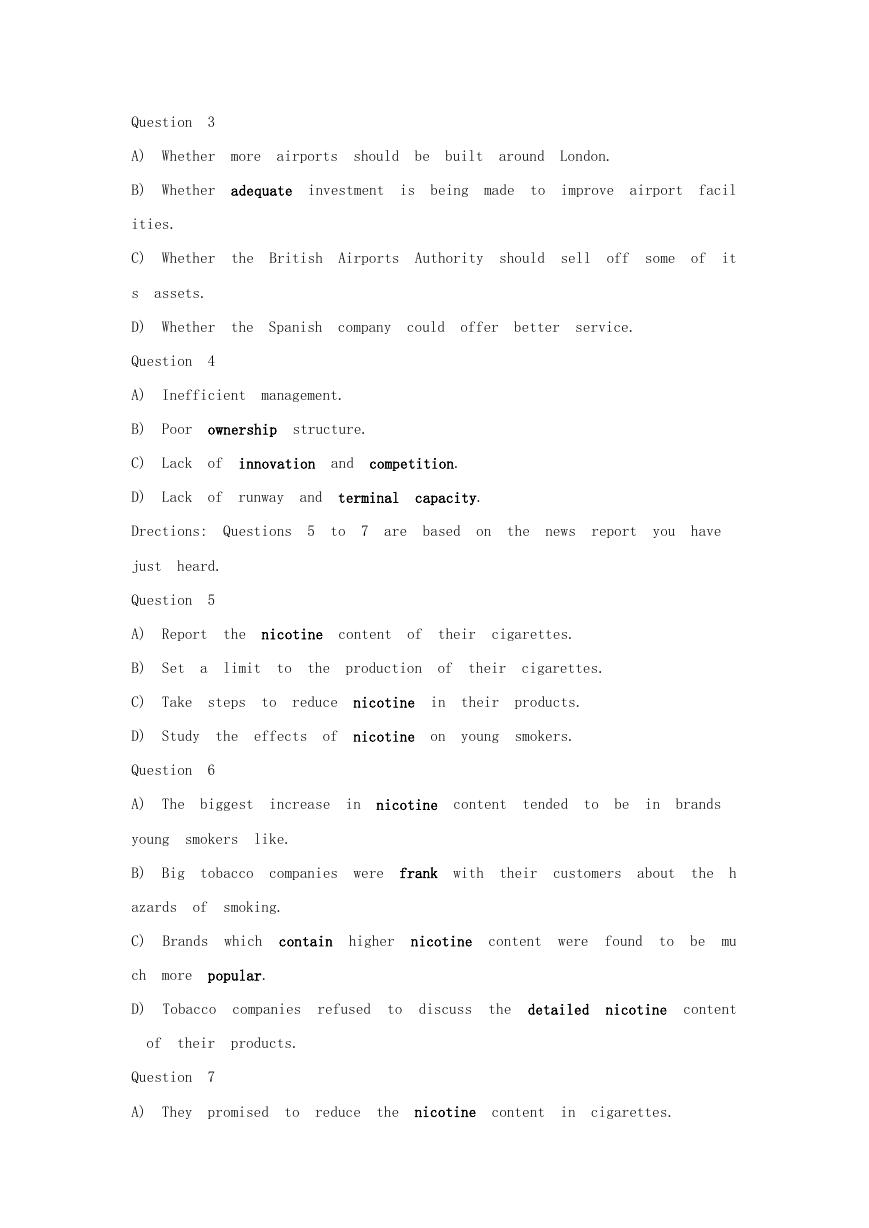
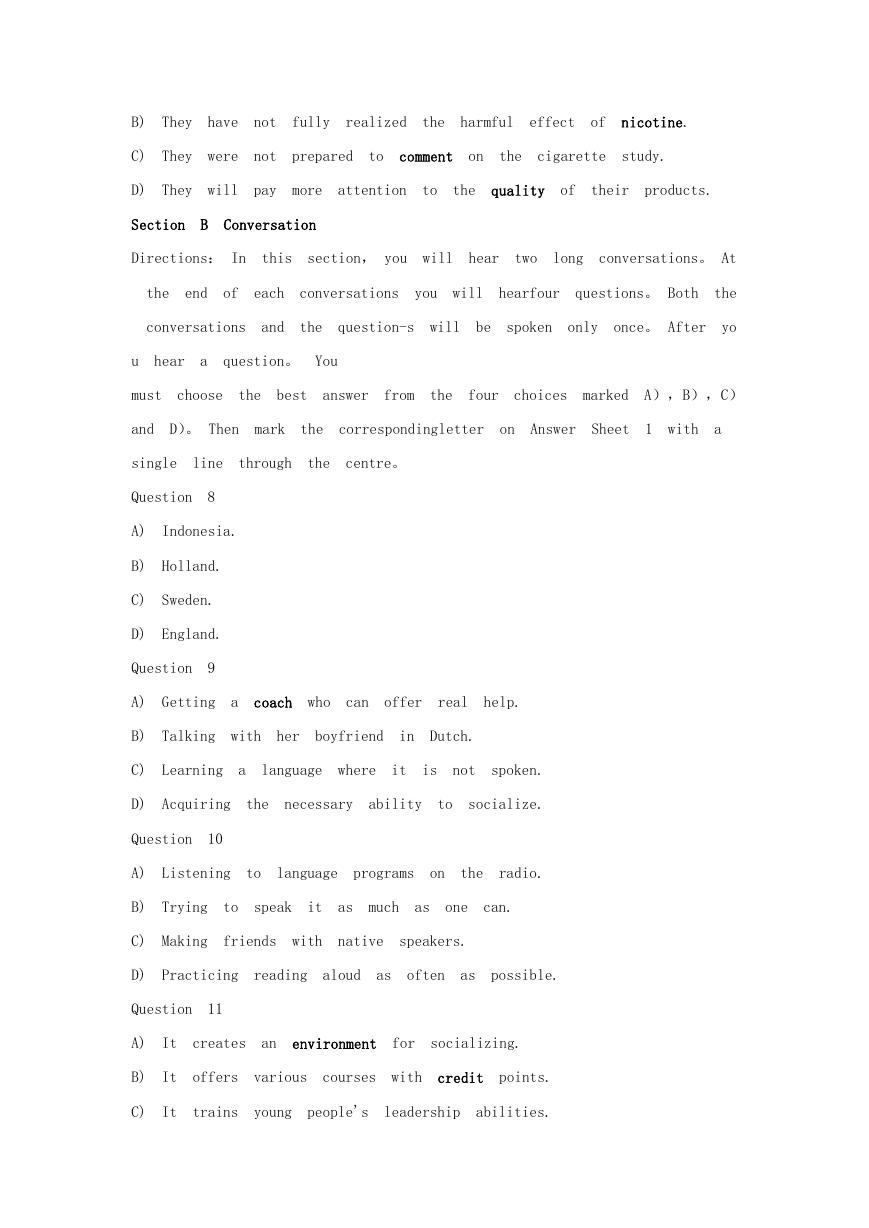

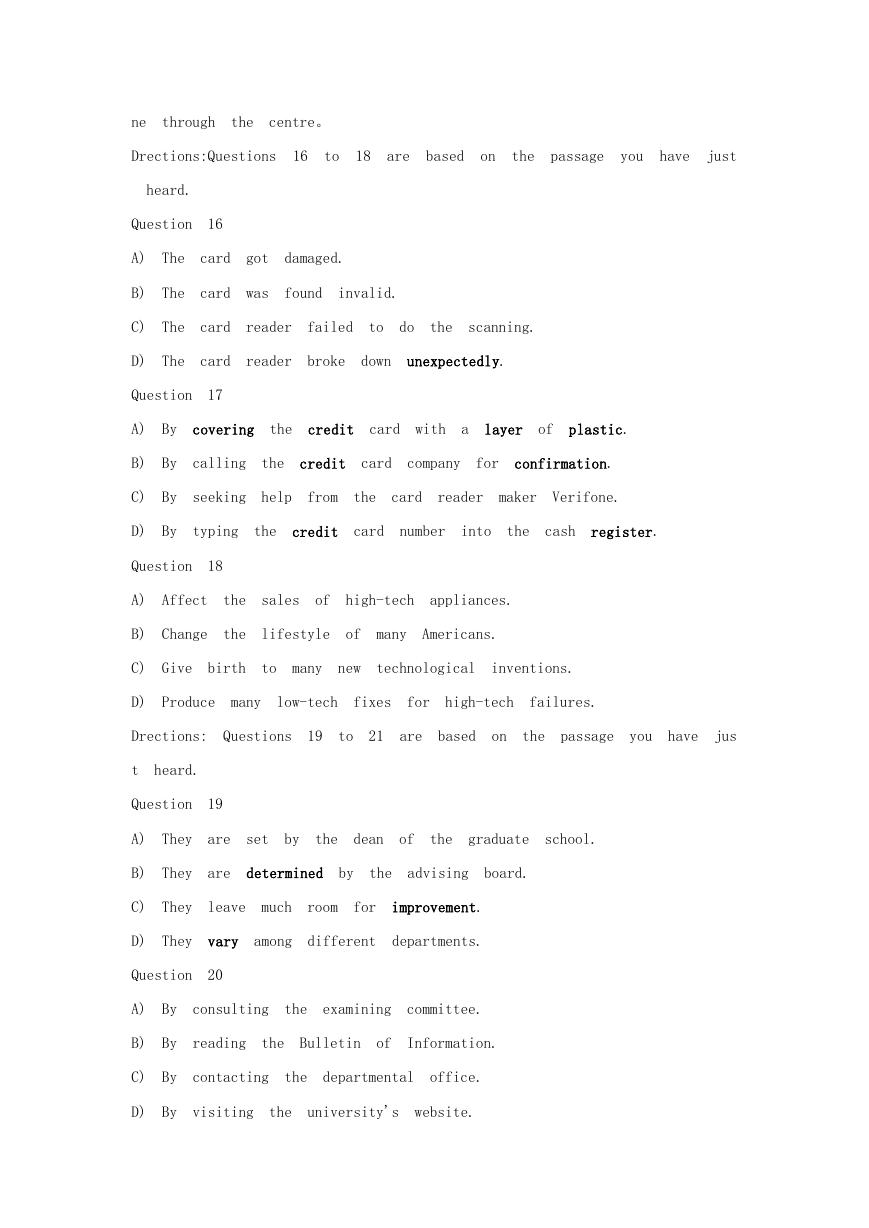
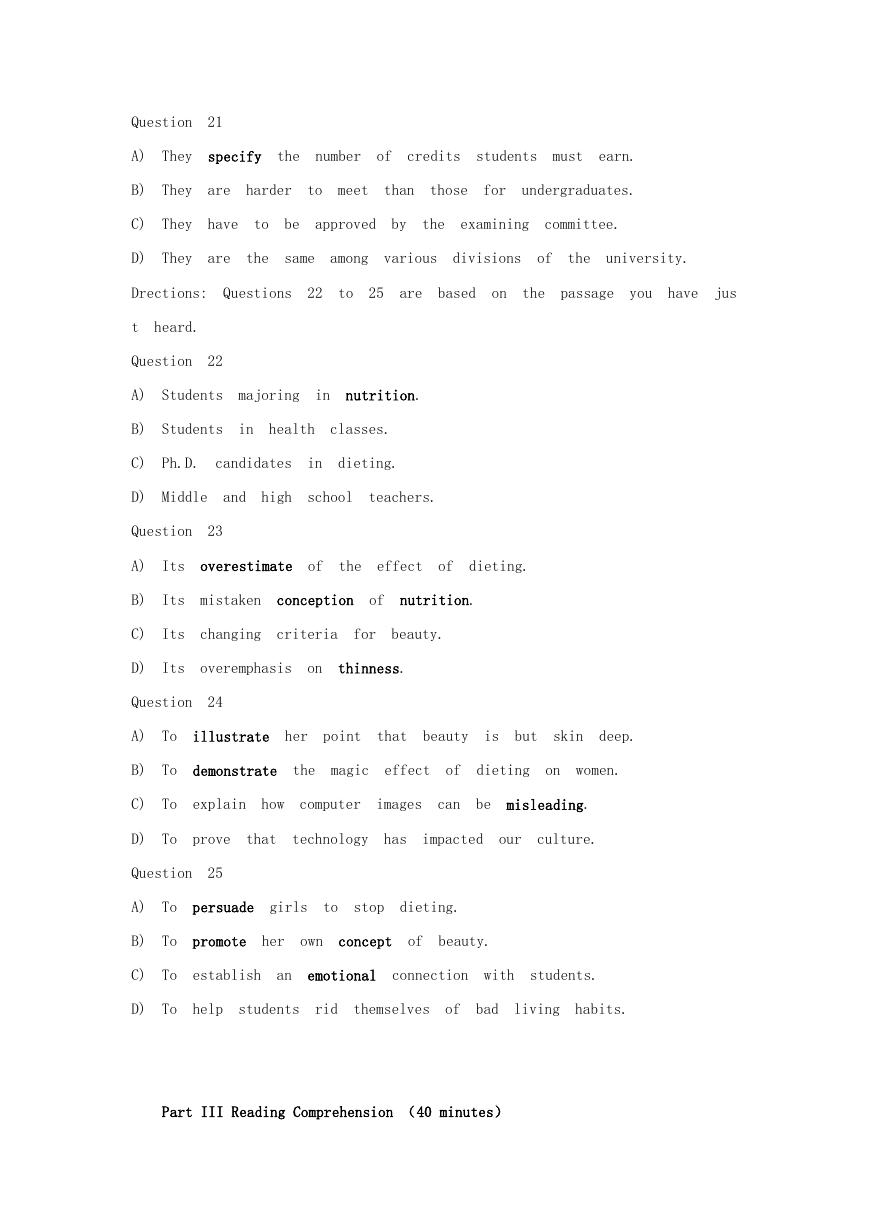
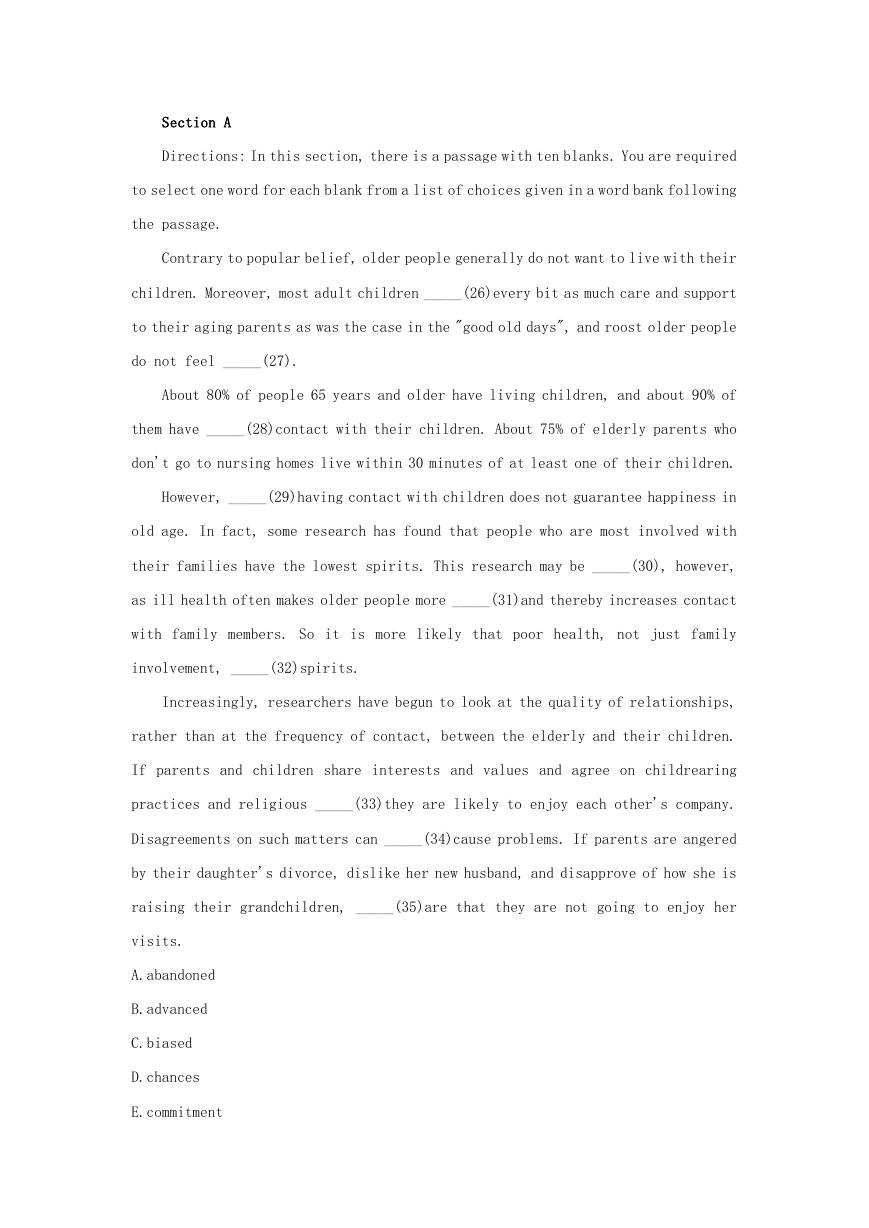
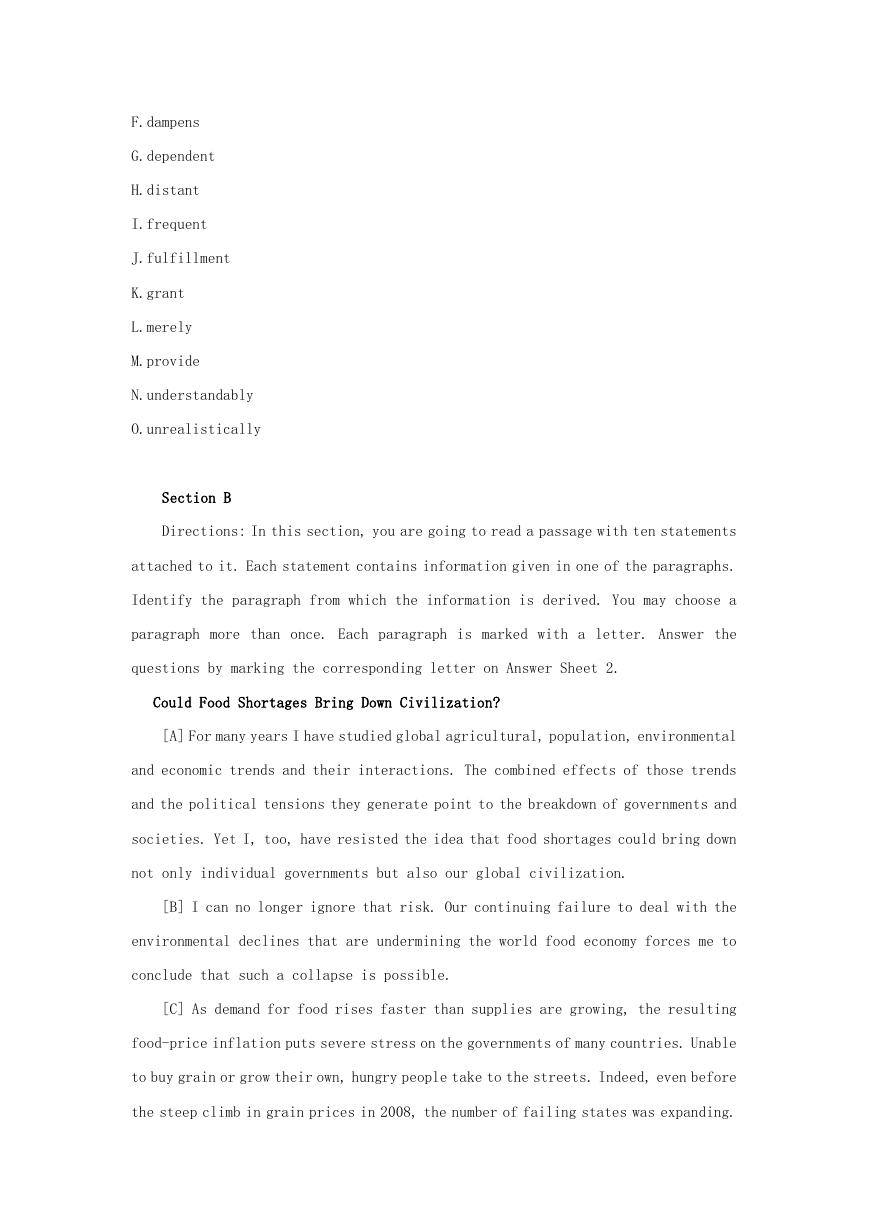








 2023年江西萍乡中考道德与法治真题及答案.doc
2023年江西萍乡中考道德与法治真题及答案.doc 2012年重庆南川中考生物真题及答案.doc
2012年重庆南川中考生物真题及答案.doc 2013年江西师范大学地理学综合及文艺理论基础考研真题.doc
2013年江西师范大学地理学综合及文艺理论基础考研真题.doc 2020年四川甘孜小升初语文真题及答案I卷.doc
2020年四川甘孜小升初语文真题及答案I卷.doc 2020年注册岩土工程师专业基础考试真题及答案.doc
2020年注册岩土工程师专业基础考试真题及答案.doc 2023-2024学年福建省厦门市九年级上学期数学月考试题及答案.doc
2023-2024学年福建省厦门市九年级上学期数学月考试题及答案.doc 2021-2022学年辽宁省沈阳市大东区九年级上学期语文期末试题及答案.doc
2021-2022学年辽宁省沈阳市大东区九年级上学期语文期末试题及答案.doc 2022-2023学年北京东城区初三第一学期物理期末试卷及答案.doc
2022-2023学年北京东城区初三第一学期物理期末试卷及答案.doc 2018上半年江西教师资格初中地理学科知识与教学能力真题及答案.doc
2018上半年江西教师资格初中地理学科知识与教学能力真题及答案.doc 2012年河北国家公务员申论考试真题及答案-省级.doc
2012年河北国家公务员申论考试真题及答案-省级.doc 2020-2021学年江苏省扬州市江都区邵樊片九年级上学期数学第一次质量检测试题及答案.doc
2020-2021学年江苏省扬州市江都区邵樊片九年级上学期数学第一次质量检测试题及答案.doc 2022下半年黑龙江教师资格证中学综合素质真题及答案.doc
2022下半年黑龙江教师资格证中学综合素质真题及答案.doc